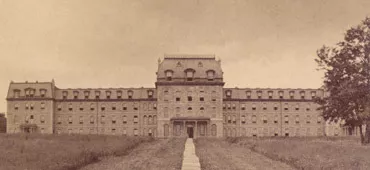History of the Economics Department

by Joshua Hausman '05
This paper presents a history of the Department of Economics at Swarthmore College from the founding of the college until 1970. It is a narrative, not an argument for a thesis. Nevertheless, before plunging into the story, it is helpful to note two themes in the Economics Department's history. First, the history of economics teaching at Swarthmore is one of nearly continuous growth and professionalization. When political economy was first offered at Swarthmore in 1872, there was only a single year-long course in the subject. It was taught by Maria Sanford, whose post-secondary education was at a Normal School, and who doubled as the sole professor of history at Swarthmore. In 1972, in contrast, the Swarthmore Economics Department offered twelve semester-long economics courses and eight seminars. It had eleven full and part-time members, seven of whom had economics Ph.Ds. And members of the Department were specialized teachers, usually teaching only a couple subject areas within economics.
Despite this dramatic growth, there is a notable continuity in the history of economics at Swarthmore: a devotion to Quaker causes and social justice that often superseded purely theoretical interests. Maria Sanford, for example, would become famous for her commitment to progressive causes; after leaving Swarthmore, she gave public lectures that promoted the University of Minnesota. In the 1930's, Patrick Malin, a member of the Department from 1930 to 1950 and a devout Quaker, worked unsuccessfully to make Swarthmore admit African-American students. Malin left Swarthmore in 1950 to lead the American Civil Liberties Union. Sanford and Malin were not uncharacteristic of the Swarthmore Economics Department. In part because of Swarthmore's Quaker roots, to a notably greater extent than the American economics profession as a whole, members of the Swarthmore Economics Department have often combined teaching and academic research with a commitment to the social issues of the day. Thus the Swarthmore Economics Department has generally fallen on the more progressive and less theoretical side of divisions among American economists. From the 1890s through the 1920s, this meant a close association with Richard T. Ely and the German Historical School of Economics. In the 1970s, this meant resistance to the introduction of math into the curriculum, as well as an emphasis on the role that governments can play to ameliorate social problems such as poverty, public health, and unemployment....



